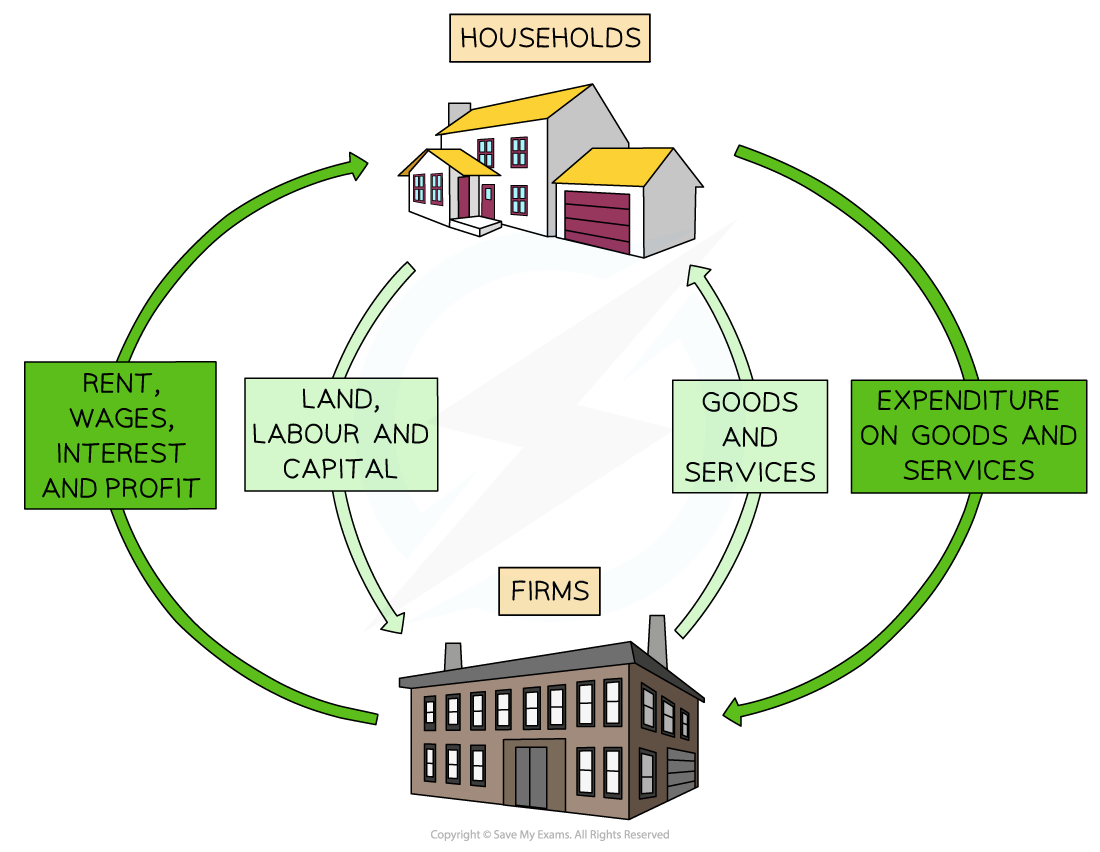1.1 What is Economics?
1/21
There's no tags or description
Looks like no tags are added yet.
Name | Mastery | Learn | Test | Matching | Spaced |
|---|
No study sessions yet.
22 Terms
Difference between micro and macro economics?
Microeconomics studies individual markets and choices of individuals, households, and firms.
Macroeconomics studies the entire economy, focusing on government policies, economic growth, and interaction with the rest of the world.
Scarcity
unlimited wants but limited resources- suppliers are unable to meet the economies wants due to the scale being too high to fulfil
Efficiency + allowcative effeciency
Efficiency is determined by the ratio of useful output to total input. Allocative efficiency refers to making the best possible use of scarce resources to produce the combinations of goods and services that are optimum for society, thus minimising resource waste.
Intervention
Intervention in economics usually refers to government involvement in the workings of markets.
Change
The economic world is continuously changing, and economists must adapt their thinking accordingly.
Choice
Since resources are scarce, economics is a study of choices. Not all needs and wants can be satisfied; this necessitates choice and gives rise to the idea of opportunity cost.
Sustainability
Sustainability is the ability of the present generation to meet its needs without compromising the ability of future generations to meet their own needs.
Equity
In contrast to equality, equity refers to the idea of fairness, which is a normative concept. The degree to which markets versus governments should, or are able to, create greater equity or equality in an economy is an area of much debate.
Interdependence
Individuals, communities, and nations are not self-sufficient. Consumers, companies, households, workers, and governments—all economic actors—interact with each other within and, increasingly, across nations in order to achieve economic goals.
Economic Well-being
Economic well-being is a multidimensional concept relating to the level of prosperity and quality of living standards enjoyed by members of an economy. It includes present and future financial security, the ability to meet basic needs, the ability to make economic choices permitting achievement of personal satisfaction, and the ability to maintain adequate income levels over the long term.
4 factors of production
CELL stands for Capital, Entrepreneurship, Land, and Labor.
What is the basic economic problem?
People have unlimted wants, but resources are finite, leading to scarcity. This fundamental economic problem requires choices to be made about the allocation of limited resources to meet those wants. Scarcity forces individuals and societies to prioritize their needs.
Economic Agent
Any decisions maker in the economy
Opportunity Costs
The value for next best alternative while making the decision
Enterprise meaning in CELL production
Enterprise refers to the people who organise and co-ordinate the other three factors of production. Some economists regard entrepreneurs as a specialist form of labour input. Others believe that they deserve recognition as a separate factor of production in their own right.
Free Economies
Systems where buying + selling goods → not in control.
Economic goods
Scarce in relation to the demand for them
Free goods
are abundant in supply(water,air)
What is the The Production Possibilities Curve Model (PPC)
The Production Possibility Curve (PPC) is an economic model that considers the maximum possible production (output) that a country can generate if it uses all of its factors of production to produce only two goods/services.
Some assumptions of the PPC model?
1. Only two goods are produced: any two goods can be used to illustrate the underlying principle. In reality, an economy produces many goods/services but focusing on two makes the analysis possible
2. Scarcity of resources exists: the factors of production are limited so choices have to be made about how they are used.
3. Production is efficient: it is assumed that there is no wastage and that all resources are used in such a way that the maximum output is attained from the inputs used. In reality, this is often not the case.
4. The state of technology is fixed: as the model represents a particular moment in time, it is assumed that the technology is not changing. In reality, improvements in technology are continuously occurring and they create the potential to increase the output using the scarce resources.
The Circular Flow of Income

Leakages + Injections
Injections add money into the circular flow of income and increase its size eg:
Increased investment (I)
Increased exports (X)
Increased government spending (G)
Leakages (withdrawals) remove money from the circular flow of income and reduce its size
Increased savings by households (S)
Increased taxation by the government (T)
Increased import purchases (M)